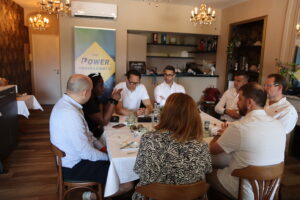By Rob Webster, Founder, Canton Marketing Solutions
As has been widely discussed, over half of all media bought now is digital or online media.
Now not everyone includes paid search and paid social as programmatic, reserving it for display. Yet if we take a broader view of programmatic all these channels qualify as they all involve “programming” a platform to buy media against a series of variables including audience, demographic, context, location, time and more.
Taken on this definition no media was bought programmatically 20 years ago and now it’s over half of all media and rising with the emergence of platform-bought OOH and TV.
Yet despite this seismic shift in how media is executed, communications planning techniques for traditional brands have barely shifted in over 20 years. There are of course exceptions but too few planning practitioners have experience buying across the digital platforms.
Furthermore, traditional brands’ planning process is often not online friendly. Of the dozens of major traditional brands I have been lucky enough to work with, only a very small minority had adequate programmatic expertise and logistics in their planning process.
Instead what seems to happen is that a traditional communications plan is created and then budget is given to channel specialists to go through a secondary planning process either at a very high level (eg “Digital) or at a channel (search, social, display, affiliate) or at most a platform level (Google search, YouTube, Facebook, instagram etc).
This results in online media being fundamentally poorly planned from campaign inception. Traditional brands that do not look to resolve this risk being left behind as programmatic media increasingly dominates.
Newcomers to the market often operate a digital-first planning solution and this can be a reason behind their ability to disrupt the market and gain market share.
Platform expertise in planning: speed and optimisation baked in
Traditional media planners would state they do not need to know the minutiae of search to plan it.That media principles are fundamentally all the same everywhere in terms of campaign objectives and top level techniques used.
I would counter that without a more fundamental understanding of the platform they cannot effectively plan it. Programmatic media works at a pace traditional media planners simply are not used to.
Furthermore that pace means that planning and ongoing optimisation are much more intertwined than they are for traditional media. It is this dynamic that means that traditional planning and buying expertise and process are not going to produce the best programmatic results.
Constrained media leads to constrained growth
With traditional media being planned weeks and sometimes months in advance this ties up budget for a particular course. Best practice programmatic is far more nimble and you don’t always know when an opportunity will arise.
An event or TV show featuring a brand’s product could open up an opportunity for programmatic media to capitalise on. Yet many brands struggle to move the budgets required due to the planning process and so miss out on the opportunity.
Worse is that the creative may have been briefed in to a rigid plan rather than allowing for reactive media to be run. These are opportunities more nimble opponents will gobble up.
What about splitting DR budgets from branding efforts? This is better however again leads to a lack of strategic thinking in the DR budgets.
Worse, Facebook, Instagram, YouTube Twitter and Snap particularly can be highly effective brand environments yet work at a cadence more akin to programmatic DR.
Fundamentally whether DR or brand, programmatic media is important and needs to be planned correctly from the inception with coherent budgets, setups (including contingency) and creative.
Attribution
Attribution is clearly an important part of the situation. Predictive modelling, otherwise known as media mix modelling or econometrics, is quite rightly at the heart of traditional planning and this rigour can be an advantage.
Such techniques are still the only way to get a holistic view of all media spend. Yet at this time such modelling has significant flaws. Typically, models are updated quarterly or half yearly and find it hard to pick up always-on channels.
Until automation and AI get to the stage where such modelling can be updated much more frequently, it needs to be supplemented with direct attribution. Here both traditional econometrics and modern digital attribution have much to learn from each other and the best possible results is a framework that works in harmony.
Math Men entering planning
Brands need to ensure that online media natives are involved in their communications planning. Few programmatic practitioners today consider moving into planning which is a dynamic brands and agencies need to change.
When brands involve programmatic natives from the get go their business performance and growth can be transformed. As a reminder, many newer disruptive brands take a online/programmatic first view to planning and this is an approach traditional brands should consider adopting in order to shift their planning behaviour.
The best possible approach for the here and now is a hybrid that respects both disciplines and done rightly this is how traditional brands can e new rivals.
This is an exciting time for programmatic practitioners. It’s time for them to step out of the delivery phase and take more ownership of marketing strategy. Yes they must be humble and learn from their predecessors but the future clearly belongs to them.









